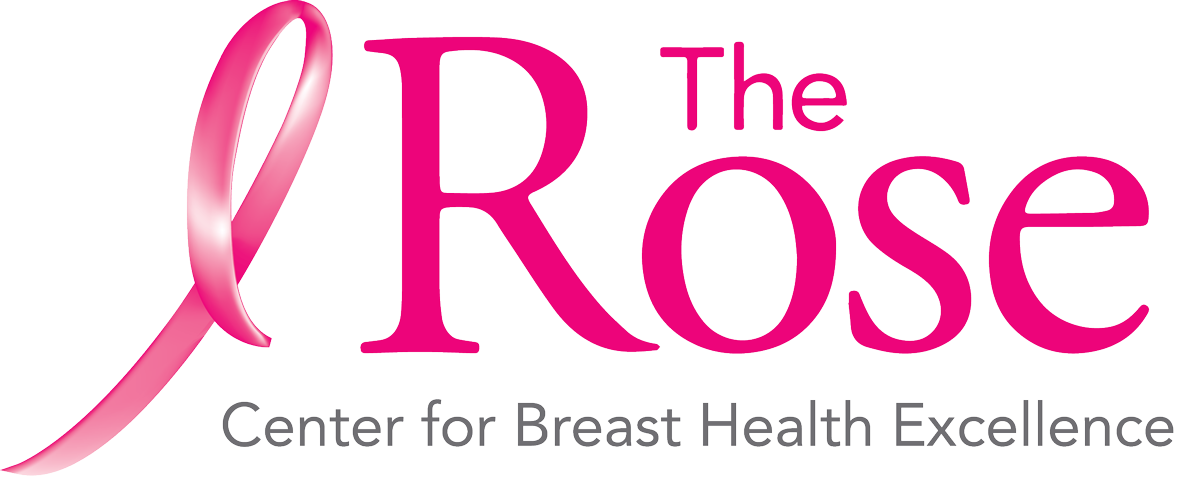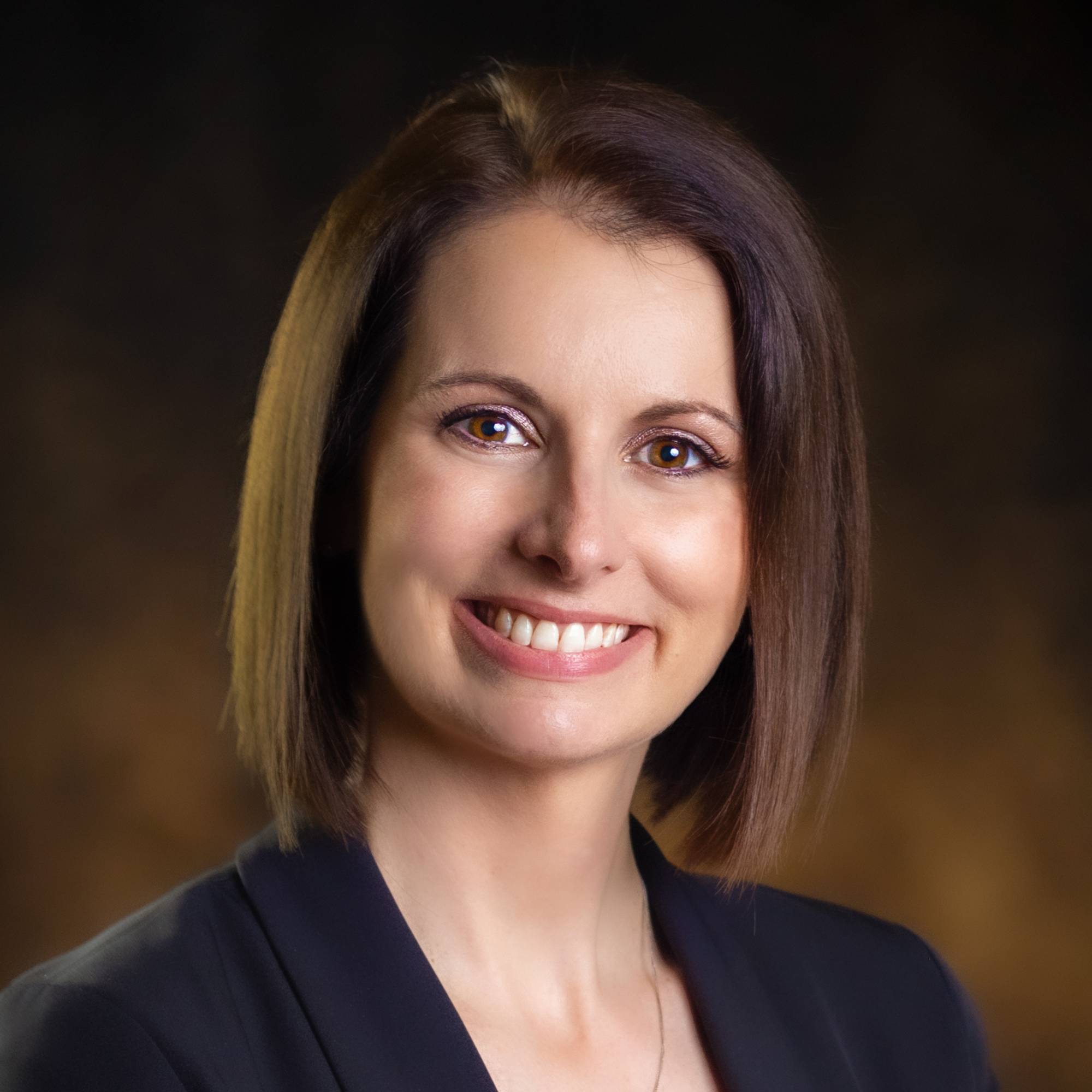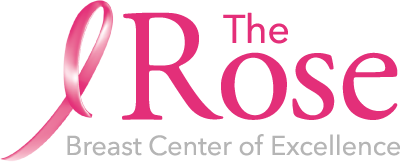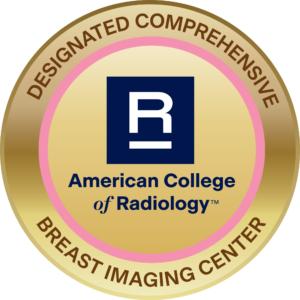Dorothy: [00:00:00] Just how important is advanced breast care for women’s health? At The Rose, very important. Today our COO, Jessica Duckworth, joins me to talk about our new breast imaging services and genetic testing. These technologies will continue our mission to serve Texans by providing access to comprehensive care to both the insured and the uninsured patient.
When you subscribe to our show, you help us grow. Someone you know may need to hear this story, so please share with your family and friends. And consider supporting our mission. Your donation can help save the life of an uninsured woman.
Let’s Talk About Your Breasts, a different kind of podcast presented to you by The Rose, the Breast Center of Excellence, and a Texas treasure. You’re going to hear frank discussions about tough topics, and you’re going to learn why knowing [00:01:00] about your breast could save your life.
Jessica, thank you so much for being with us here on let’s Talk About Your Breasts. Now, you’re the Chief Operating Officer of The Rose, and we have a lot of new services that we’ve just launched. So I want you to just tell us real high level what these new services are, and what, what women can expect when they have them, and then, and how they’re going to come about.
Jessica: Well, thank you for having me. I think one of the most exciting new services that we are offering is Breast MRI. Um, so Breast MRI has been around a long time, but technology is continuing to advance. And so we’ve partnered with, uh, Live Healthy Imaging, um, which is an accredited breast MRI facility. It’s actually right next door to our Galleria office on the first floor. And we will be [00:02:00] partnering to be able to provide the services to our patients. Um, so Live Healthy Imaging will provide the clinical exam for patients. And then our board certified radiologists, um, will be reading the exam and providing that continuum of care to our patients.
Dorothy: So, you know, we talk continuum of care all the time. What is that? What does that really mean? Tell me in lay terms, what does it mean?
Jessica: So the radiologist that’s reading your mammogram and your ultrasound is going to be the same radiologist that’s reading your breast MRI.
Dorothy: And doing something with the clinical correlation, right?
Jessica: Clinical correlation, that’s right.
Dorothy: You’ve come in, you have a lump or a palpable area.
Jessica: Right.
Dorothy: So that radiologist already knows that, going into your mammogram, into your ultrasound, and now there’s an indication for an MRI. Why? Why would you have an MRI?
Jessica: MRI has, is helpful for screening for patients who have, are at high risk that have family history, uh, a strong family history of breast cancer or have dense [00:03:00] breasts. Um, it is also very valuable when it comes to clinical correlation. So you find something on your mammogram or your ultrasound and you need to look at it further to be able to have that with the MRI. It also is good for extent of disease, so once a patient is diagnosed with breast cancer, taking a deeper look at the breast to see what the extent of the disease is.
Dorothy: And does that happen often, that we find other cancers on an MRI?
Jessica: It doesn’t happen often, but it does happen. Actually our first patient that we did, through this partnership, we found something else actually in her other breast.
Dorothy: And how does that change her treatment?
Jessica: Well, it provides, it is huge. It provides the full picture to her, her physician. So it could be the difference of having a lumpectomy or a mastectomy. Um, and it could really make a difference in her course of treatment that she, she does. So before we were able to do the [00:04:00] mammogram and, and do the ultrasound and provide the diagnosis and then turn the patient over to her physician.
So now we’ll be able to have that last piece of the puzzle, so as soon as she goes to her physician, they’re going to be able to, to start talking about treatment, um, and start talking about her surgical options without her having to spend more time getting more tests done.
Dorothy: So why now? You said MRI’s been around a long time. Why now?
Jessica: I think technology is advancing. Genetic testing and high risk is really becoming a focus for patients outside of just screening, really looking at their family history. Looking at why, um, you know, what their risk factors are for breast cancer and MRI just kind of helps with that overall picture of the patient.
And then we, another service that we are going to be offering is the high risk genetic testing, um, which [00:05:00] is going to be another new service for us. And so they, they go hand in hand with each other.
Dorothy: So, I’m, I’m going through my mammogram, right, and, uh, the technologist sees that I have family history. Maybe some other indicators and that is what dictates maybe in high risk?
Jessica: That’s what drives you being high risk.
Dorothy: And then the radiologist looks at the breast tissue and determines whether or not MRI is the next step.
Jessica: Risk is usually, you know, we look at age, we look at family history, um, we look at personal history of breast cancer, um, we look at breast density and we look at gynecological history.
So when did you start your first period? Did you take hormones? When did you start menopause? So all of those kind of come together to form your lifetime risk of developing breast cancer.
Dorothy: And any woman has some risk.
Jessica: Every woman. The general risk is about 10 to 12 [00:06:00] percent. We’re looking at anyone that has a risk of over 20 percent.
Dorothy: Okay.
Jessica: So all—
Dorothy: 20 percent of developing?
Jessica: Lifetime. Lifetime Risk of Developing Breast Cancer. It doesn’t mean that they’re going to develop breast cancer, but when you line all of those factors up, um, if we get that score of more than 20%, so all patients coming into the Rose will be screened. It’ll happen in the background just as you have your normal mammogram and The technologist asks you all of your history questions, it’s going to be calculating in the background that percentage.
So we’re going to know if you are at higher risk of developing breast cancer. And so once we recognize that, then we’ll be able to share that information with the patient that, that they are high risk and provide and recommend for them to schedule an appointment with our nurse practitioner at our high risk clinic. And then she will educate them on what it means to be high risk and what are your [00:07:00] options once you are identified with high risk. So depending on what those factors are, you could be, qualify for genetic testing. Um, you could qualify for increased surveillance, meaning you have a mammogram more often or we add an ultrasound or breast MRI to your screening. That you’re done. And then in some cases, once you get those results back, it could be a referral to a physician to decide if you wanted to maybe do an elective surgery. You know, some women have a prophylactic mastectomy once they get genetic testing back to just say, I don’t want to, I don’t want to keep the risk. I just want to, you know, move forward and, and do that, whether it’s their ovaries or whether it’s their, their breasts that they decide to have that surgery.
Dorothy: So, part of Why, now, was we did have an anonymous donor who wanted us to complete, I think her question was, what is it The Rose doesn’t have that you wish [00:08:00] you did? And what is it that would balance the playing field for your insured and uninsured? And you immediately went to MRI. Because before, we had to find that service for an uninsured person, right?
Jessica: We did. We did. We had to, to find a place within the community and find funding, um, to be able to support.
Dorothy: Or the patient had to come up with it, and always it was a discount.
Jessica: Correct.
Dorothy: But still, but still, it was very expensive.
Jessica: It, it was still a barrier, right? Um, for women. And so because of the donation of, of the wonderful anonymous donor that wanted us to start this program kind of led us down this way, this path to this partnership, which just naturally fed into the high risk clinic, um, for being able to, to identify women that were at risk and provide the service to them.
Dorothy: And I’m sure our donor didn’t expect us to be able to do two different things that could really make a difference in, in all women’s [00:09:00] life, but especially our uninsured.
Jessica: That’s right.
Dorothy: Yeah. This was very, um, one of those gifts that has just so many other potentials in the ways that we serve. I think another thing that changed also with genetics testing is that we didn’t really have counseling on board until this.
Jessica: That’s right.
Dorothy: And and now because of that and we always felt very strongly that You can’t just give someone a report that says, Oh, you, you have a genetic possibility here without at least providing that counseling and being there to answer whatever questions.
Jessica: And that’s that key to that continuum of care to the patients. You know, we don’t ever want to just, you know, do a screening mammogram and say we found something and, and, and we can’t help you. Um, and then, you know, two years ago, we launched our mammogram to medical home program, which we are rolling the high risk into that, which is we brought on a nurse practitioner and her team to be able to [00:10:00] see women who are uninsured and don’t have a medical doctor.
And so she started kind of that high risk screening with the those patients. So when we navigated them to their final medical home, then the doctor again had the full picture, uh, for the patient. So we’ve, we kind of backed that into, okay, well how can we expand on that and include all of our patients and now that we have the MRI—
Dorothy: We can.
Jessica: We can.
Dorothy: So insured or uninsured, these two services are available to either one?
Jessica: That is correct.
Dorothy: And these have to be ordered? You said genetic testing happens in the background.
Jessica: Genetic testing happens in the background, so we will, every patient who walks through the door, insured, uninsured, we will be screening them in the background.
And then once we identify those that are at high risk, then we’ll be reaching out to them, um, and encouraging them to, to make this appointment. Once you’ve been identified as [00:11:00] high risk, um, your insurance typically will cover that service if you have a greater than 20% chance, and of course if you’re uninsured they’ll be covered through our EmpowerHer program. And so, we have a partner with the, the High Risk Clinic and Genetic Testing in Natera. They will be the ones that are conducting that test, um, and providing us the results of the test.
Dorothy: And Natera is?
Jessica: Natera is the genetic testing screening company. They do a lot in the breast health world as it relates to, to genetics and laboratory work. And then they also have, they also help support the uninsured, um, so they’re providing those, those test results to uninsured patients at no cost.
Dorothy: And that was one of the first company’s organizations that was able to provide both. And that made a big, big difference.
Jessica: Big difference.
Dorothy: In what we do.
Jessica: And then with Live Healthy Imaging, who is our [00:12:00] breast MRI partner, they do all kinds of, um, of MRI and they do a lot of clinical trial work as well. And so they were very excited to partner with us, both to be able to help the uninsured women as well as the insured women. So they are on all of the major insurance payers as well.
Dorothy: So, it did require a special, I know you call it coil, but it’s special equipment, right?
Jessica: Correct.
Dorothy: That has to be part of the MRI to do the breast.
Jessica: And Live Healthy Imaging, they have a state of the art 1. 5 Tesla magnet, which is a very high level piece of equipment and magnet that they use. And they have a 16 channel dedicated breast coil. So the higher the channel, um, the faster the test and the higher the image quality. So, they have. top of the line, um, when it comes to breast MRI.
Dorothy: So no matter, that uninsured woman’s getting the same top quality, top of the line [00:13:00] exam as the insured?
Jessica: Yes.
Dorothy: Talk about leveling and playing field. Now you’ve touched on it, but this is another area that all of this has brought into our life and that has to do with research and clinical trials, but primarily research.
Jessica: Primarily research. That’s right.
Dorothy: So talk about that just a little bit.
Jessica: And so, you know, again, combining all of these services together and looking at where the greatest impact is. We had an opportunity to partner with Tranquil Clinical Research in Webster, and they are a research company that is prioritizing, making sure that the clinical trial world has a diverse population that is available to them, that clinical trials are available to anybody, which falls right along with our mission.
You know, at The Rose, you don’t see a lot of diversity in some clinical trials. Um, so being able to offer that to our patients [00:14:00] and then also, um, having a unique opportunity that, I mean, The Rose has been here for 38 years. We have data upon data upon data from a very diverse population, both ethnically and economically, both from rural and urban, both insured and uninsured.
We have a lot of data when it comes to breast screening and diagnosis. And so, being able to make that data available to the clinical, research world and really be able to impact the future of screening mammography and diagnostic and diagnosis is something that we are very excited about. And by partnering with Tranquil Clinical Research, being able to have them go out and find studies that our data would be suited for, as well as clinical trials that could be available to our patients.
Dorothy: Basically, what it means is, If our uninsured population has different barriers, is [00:15:00] diagnosed later, whatever, it shows up in a different way, perhaps, than our insured. And that’s the population that we don’t have a lot of information on. So this could mean, uh, it could translate or transform even care.
Jessica: And that’s the data that the researchers want. They want real world data.
Dorothy: Right.
Jessica: Um, so that they can really impact the future of, you know, the services that we’re providing.
Dorothy: Because not everybody’s insured.
Jessica: Not everybody’s insured.
Dorothy: Yes. And that, that’s the biggest factor. So, again, go through the three very quickly.
Jessica: So, breast MRI, through our partnership with Live Healthy Imaging, um, you had asked earlier about requiring an order, um, so this will be patients that come into The Rose, we provide the service, the radiologist recommends for them to have a breast MRI, and then we will coordinate that with the patient as well as with their ordering physician.
[00:16:00] And then our high risk clinic, so all patients that come into The Rose will be screened for their risk factors. for developing breast cancer, and then they will be contacted by our high risk clinic, um, and given the opportunity to be able to come in and consult with the nurse practitioner, learn what being high risk means, talk about, you know, surveillance opportunities for the patient, and then giving them the opportunity for genetic testing, um, if they qualify.
And then our clinical research, um, partnership with Tranquil Clinical Research to be able to utilize our data, our existing data and our future data to be able to help research advance the field of screening mammography and breast cancer diagnosis.
Dorothy: So Jessica, have you had genetic testing as a breast cancer survivor yourself?
Jessica: I have had genetic testing and I had breast MRI once I was [00:17:00] diagnosed. So I was diagnosed here at The Rose, um, had my, my mammogram and my ultrasound and my biopsy, um, and was referred out to, um, my surgeon. And then from the surgeon, took a little bit of time to go through the process but had genetic testing and had breast MRI for extent of disease which determined what my future course was going to be.
Dorothy: And how important do you think it is for a breast cancer survivor to know about the genetic testing aspect of this?
Jessica: For me the importance of Genetic Testing was my family. I have a daughter, who’s 12 now. I have a son who is newly married, and starting his family. So first thought in my mind when I received the diagnosis was, is it hereditary? Um, you know, does my daughter need to, do I need to worry about this for my daughter?
And I was very [00:18:00] fortunate that it came back negative. I was negative for all genetic mutations and it was not hereditary. Um, my breast cancer wasn’t. And so it was a huge relief for me once I got that. that information back to me. Um, that, that there was, that there was, it was not hereditary.
Dorothy: Right. And you hadn’t had any kind of breast cancer in your family.
Jessica: I had not. I had zero breast cancer in my family.
Dorothy: So, even if it had come back with a positive result. You still would have been more prepared.
Jessica: Would have been more prepared. You know, typically you start screening 10 years prior to your mother’s diagnosis or your immediate family member’s diagnosis. They typically don’t recommend genetic testing before the age of 16.
So even though at the time she was seven, I would not have, she would not have gotten genetic testing.
Dorothy: I think that’s important.
Jessica: So, you know, once, you know, she, [00:19:00] as she got older at about 16, then you would get them to get her tested, um, and then it would, you know, determine when she starts screening mammography and then, you know, what her future would look like and then the future of her children.
Dorothy: So how do you think these new services are going to impact The Rose’s future?
Jessica: I think that we’re going to be, I’m excited to be able to provide a complete picture of for our patients for their future breast health, um, whether it is that they are high risk and we can start screening them sooner to the goal of The Rose is to be able to, you know, catch breast cancer as early as you possibly can. So I think by adding these tools in, um, are going to aid us in that mission to be able to catch it at its earliest stages.
Dorothy: Which ensures a different level of survival.
Jessica: That’s right.
Dorothy: [00:20:00] And again, for the insured and the uninsured.
Jessica: And a different level of, of treatment option for the patient as well.
Dorothy: Anything else you want our audience to know? When to have your mammograms. I mean, you were a young woman when you were diagnosed, so.
Jessica: Yes.
Dorothy: Let’s hammer a little bit on. Let’s start at 40, no matter what.
Jessica: That’s right. Make sure you get your, your screening mammogram at 40. Um, get it annually, thereafter, um, again, if you have a high risk, if you have family history of breast cancer, um, you know, then determining whether or not you need to start that earlier or not and, you know, making sure that, you know, you share that message with your, your family and your mother and your sister and your coworkers that the earlier that we’re able to diagnose the, the better survival rate we have and the better, um, treatment options that are available to the patients.
Dorothy: Good message. Thank you so much, Jessica, for being with us today.
Jessica: Thank you, Dorothy. [00:21:00]
Post-Credits: Thank you for joining us today on Let’s Talk About Your Breasts. This podcast is produced by Speke Podcasting and brought to you by The Rose. Visit therose.org to learn more about our organization. Subscribe to our podcast, share episodes with friends, and join the conversation on social media using #LetsTalkAboutYourBreasts. We welcome your feedback and suggestions. Consider supporting The Rose. Your gift can make the difference to a person in need. And remember, self care is not selfish. It’s essential.




